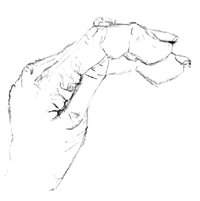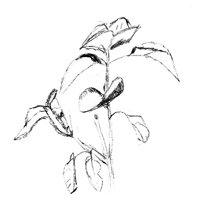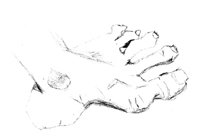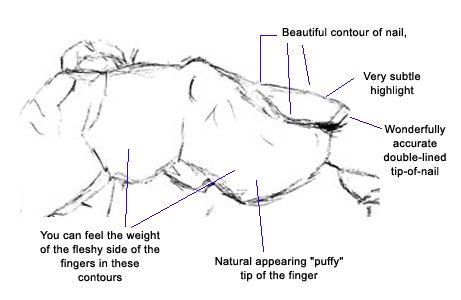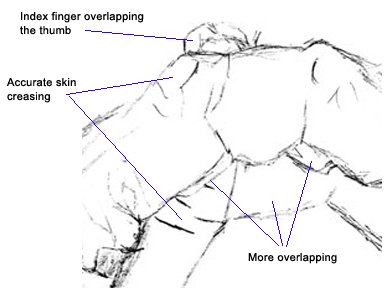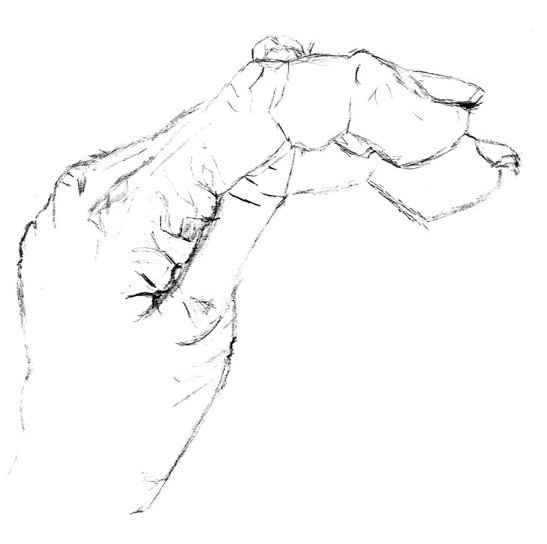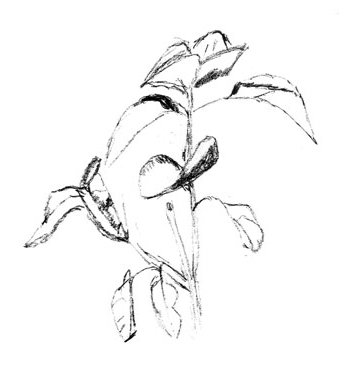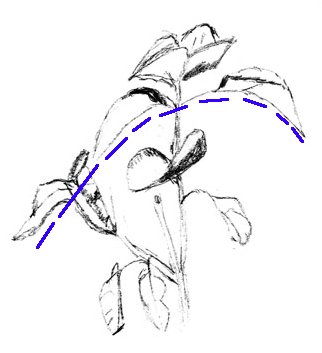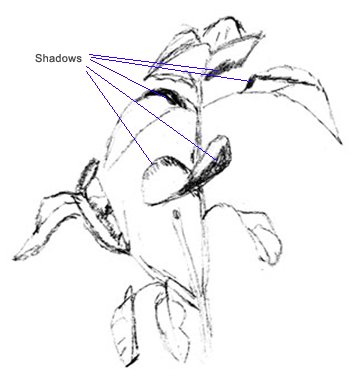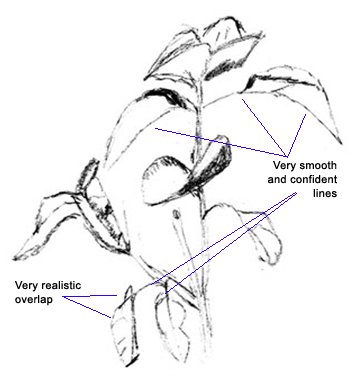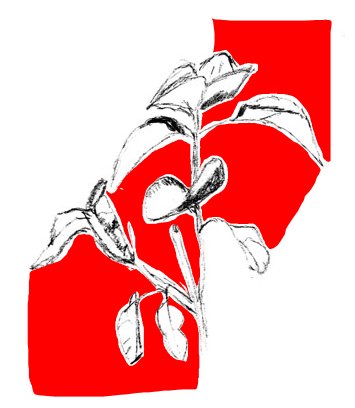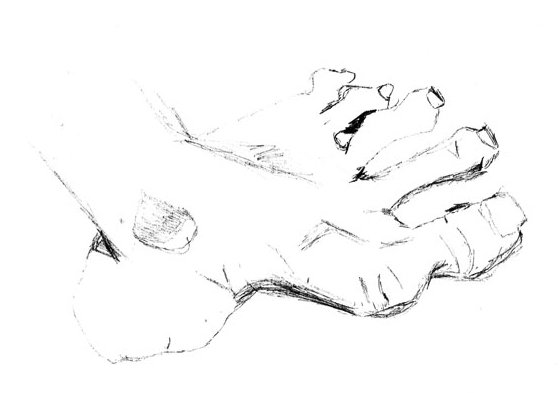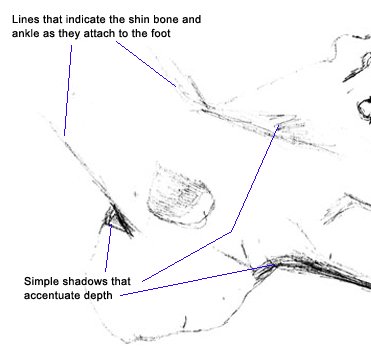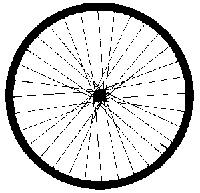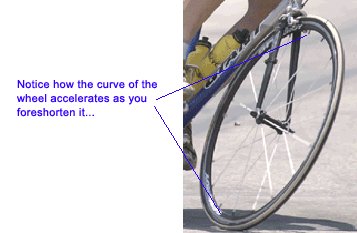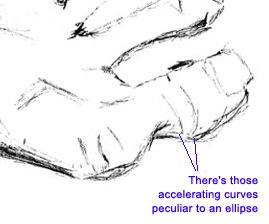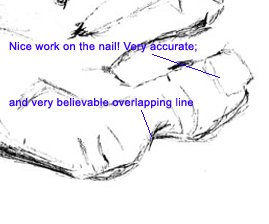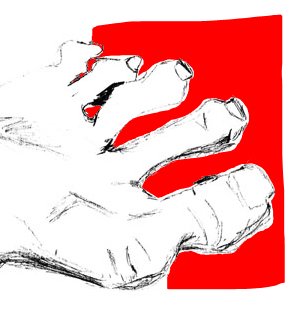|
Understanding And Applying Basic Drawing Skills:
|
| This newsletter is reproduced here by courtesy of YouCanDraw.com - Once and for all getting you drawing faces and caricatures: |
| 1 February 2005 Back to the Archives
Understanding and applying basic drawing skills -- perceiving negative space, contour and line drawing, light and shadow perception -- are paramount to your success as an artist. See this months newsletter -- right here :-) 1 February 2005
OK! Hope you all survived last weeks Midwest and Northeast blizzards. What a great chance I had to buckle down and do a little drawing myself :-) Today we're going to review some basics and we're going to do that indirectly by reviewing three drawings by Jessica W of Quincy, MA. (JW). Each picture is entitled "Modified contour" and it's clear to me that's the technique JW was using to produce these pictures. First I want to take a second to applaud Janet for being so willing to offer her pictures up for some comments. Let's dive in... In no particular order, there's three pictures: the hand - close up, a potted plant, and a foot - all three very interesting subjects to draw. I have several criteria I use when I evaluate a drawing - and you know what? You already know the criteria :-). Yes, they're the 5 skills of drawing. I have a few more I have up my sleeve, but you can always rely on the 5 skills to evaluate anything you draw. Quick review of the 5 skills: 1) Line and contour
perception Click on any of the pictures to see a larger
version and jump down the
1) JW's hand drawing I really like this picture! It's clear to me JW was deep into her R-mode (right side of the brain) for most of this picture. I mean, look at those nails: see that contour? There's even a highlight there - accidental because of overlapping lines? or by design? By design I think, no, I know. And check out the subtle curvature both in that double line at the tip of the fingernails on that index finger:
What I also find very pleasing to the eye is the weightiness you feel by the contour on the the palm side of the fingers (the fleshy side). Also note the very accurate line work over the knuckles on the index finger (visible above just before the finger runs off the page). The index finger overlaps the thumb nicely - doesn't that make for an interesting picture? It's pointed out below - the different areas of overlap that is. Back to top
Areas of overlap Also note how nicely the upper portion of thumb (where it pops up above the index finger) aligns with the lower part of the thumb (below the index finger). Also note the detail on the piece of thumb above the index finger: clear evidence that JW was really drawing what she was seeing. It's also apparent to me JW was focused more intensely on the thumb and the tips of the two fingers. Very nice work JW! Back to top
Now let's not forget about the overall picture:
The Overall picture Overall, I like the composition: the hand is placed on the paper in a left to right diagonal direction - much more interesting than the "front and center" positioning in a lot of early drawings. But I doubt JW was really even thinking about that because it looks more like she was just plain enjoying her drawing session. It's not a requirement of pure contour or modified pure contour to get any kind of accurate proportion - that's down the road several steps. And I only say that because there seems to a little disproportion between the size of the fingertips compared to the rest of the hand -- but without seeing the hand JW was drawing I can't say that because this may exactly how the hand she drew looks. Either way, I'm not worried: the way she popped into r-mode is so well demonstrated in those fingertips and fingernails. And that's the purpose of these early lessons: learning to access at will the part of the brain that is pure observer. It's always a great warm-up exercise to spend about 5-10 minutes exploring a highly detailed subject (like a small section of your hand) and look for ever deepening layers of detail, of contour, of shared edges. And then recording those details as you see them: tiny increment by tiny increment. And that's exactly what pure contour drawing is all about. This is awesome practice too when you begin drawing the features - and especially in caricature: where it's literally those tiny, minute and subtle details that make a picture "sort of look like the person you're drawing" versus nailing a likeness.
OK, next picture: the potted plant Right off the bat I'm struck by JW's sense of composition: there's a nice diagonal; flow to the drawing -- and again, in a modified contour drawing, composition isn't anything I'm concerned about. But I think JW has an innate sense about it. The next observation I have is the way light and dark pop off the page: very nice shadowing JW. Very accurate.
Potted Plants By Jessica W. from
Quincy, MA
The dominant diagonal flow I'm referring to
Here are those more noticeable shadows:
Also note the overlapping of the large leaf almost dead center in the drawing: again very accurate shadows and a sense of depth. (Notice it's "figure 8" shape too). The shadowing has a rhythm to it too - a rhythm you actually see in nature. I also very much like the the line work on the two leaves towards the top of the center stalk as well as on the leaves at the bottom to (to the left of the main stalk). Also note the little piece of leaf popping up from behind the nearer leaf: an example of overlapping just like you saw done with JW's thumb above. Back to top
Drawing plants is also great negative space practice. For instance, seeing those shapes formed between the leaves and stalks -- seeing them as unique and separate shapes and spaces can help you capture accurately the outline shapes of the leaves themselves.
Roughly highlighting a few of the negative spaces
And lastly -- and I love this
picture -- JW's foot :-)
What I like about this drawing again, is the three-dimensional accuracy of it, that is, it's clear you're looking at a foot and ankle and you're looking at them from an angle. What are the actual "lead on paper" indicators of that? For me, it's the shadow on the left side of the picture about where the Achilles tendon disappears into the heal as well as the slight shadow under the arch, (see below); and the lines that portray the shin and ankle overlapping the foot that is:
There's also the slight shadow on the outside of the foots cast the foot's instep. All these suggest the light source is above the foot and coming a bit from our side (i.e. as if coming in through your monitor into the picture). The shadow on the far left is very hard and is a triangular shape. Remember, perceiving the edges of shadow helps you reconstruct the overall shadow shape. Nice work again Jess! Back to top
The "non-foreshortened, straight-on" view of a wheel
JW has also done an excellent job of suggesting volume with simple draw lines. Where has she done this? I think most noticeably on the toes and on the big toe in particular. Notice how the lines curve ever tighter as you approach the edge of the toe. This is exactly what you accomplish when you drawn any elliptical shape -- ellipses often represent circles on their side. (Think of a bike wheel: it's round when you look at it directly from the side but becomes an ellipse as you turn the wheel, and the curvature ever tightens as you approach the edge of the wheel.)
Look up "foreshortening" in
the e-Sourcebooks search function
Big toe curves
Note in the picture above how the curve accelerates (i.e. gets tighter and tighter) as you approach the edge of the toe just like on the edge of the tire above. Capturing this curvature is just a matter of drawing what you see -- and with time and practice, the smoothness of all your lines will improve. A couple last details here: I really like the treatment of the toes and toenail on the big toe (in fact all the toes -- the 4th toe even looks like it has a little "onychomycosis": i.e. a fungal infection of the nail...but that's just me reading in probably more than what's there...JW please comment :-) It's clear to me JW spent most of her foot drawing session steeped in her artist's brain.
Where JW got out of that frame of mind becomes apparent in a few places where the lines look a little thrown on - I do this too when I'm rushing or feel a little overwhelmed by the subjects I'm drawing. There's a slight proportion problem (drawing a foreshortened version is tough in the beginning!) And that's just plain nit-picky of me, I love this foot! :-)
Seeing the negative space between the
toes as Again I'm not worried at all. There's so much proof all over your drawings JW you're getting well into r-mode (artists brain, right side of the brain, in-the-moment"...), and that's the only goal of these early lessons. Jessica (...W. from Quincy, MA), keep at it! You're doing wonderfully. Thanks again for your willingness and courage.
Warmly, Jeff
PS - Even though I do less and less of
these kinds of evaluations, I will do them -- but for a fee. If you're
interested, please email me for more information. Back
to top
Kasbohm & Company's Drawing-Faces-and-Caricatures-Made-Easy.com © Copyright, All rights reserved 1997-2005
|
